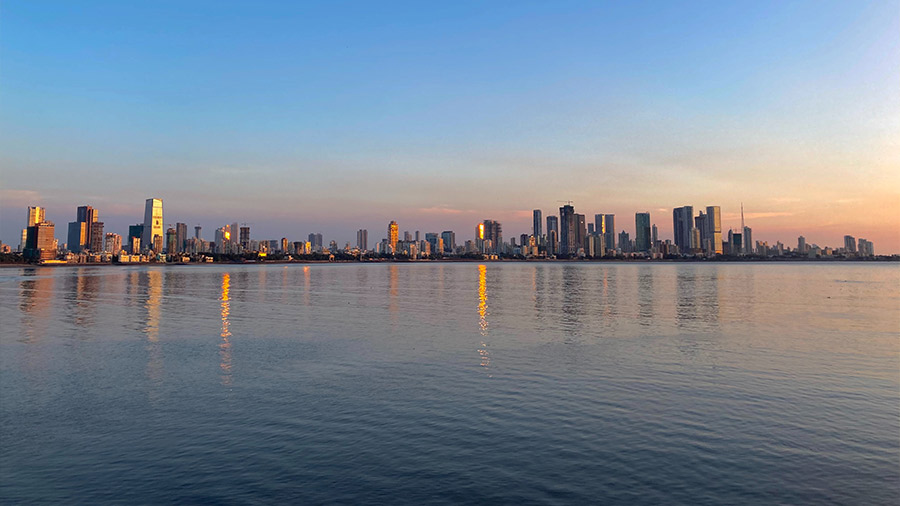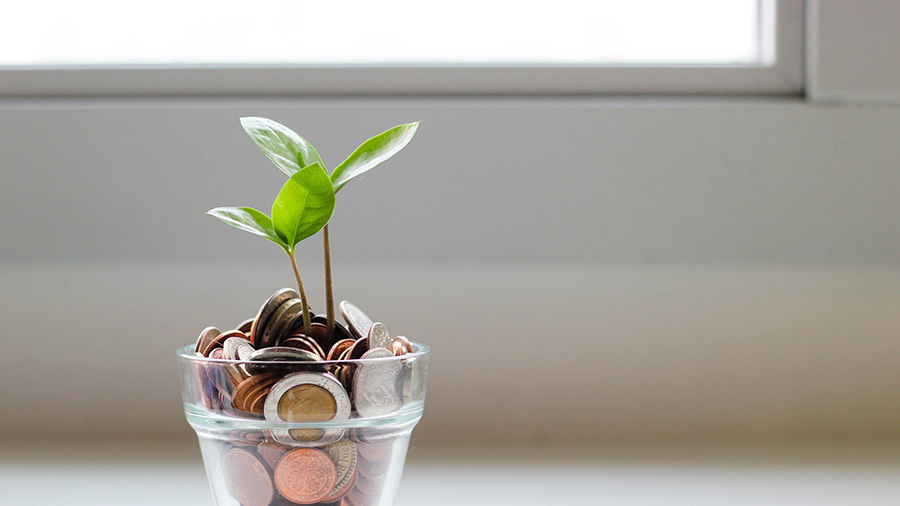Economic Indicators and India's GDP, FDI, and Trade Trends
Gross Domestic Product growth and forecast
Despite existing challenges, India's economic expansion continues to reinforce its global standing. The Reserve Bank of India (RBI) has also revised its real GDP growth projection for FY 2024-25 to 6.6 percent, reflecting resilience in economic fundamentals despite prevailing challenges. India is consolidating its position as the world’s fifth-largest economy and steadily narrowing the gap with Germany. Additionally, India’s per capita income saw a notable rise, growing at 2.73 percent in 2024, which underscores improvements in household living standards and economic prosperity.
In the January-March quarter of 2025, India's GDP surged by 7.4 percent, significantly outpacing analyst expectations of 6.7 percent and marking the strongest growth since the corresponding period in 2024.
India's fiscal policies are expected to provide some stimulus to growth. The fiscal deficit target of 4.5 percent for 2025-26 may allow for increased government expenditure, which could support economic momentum. Aditi Nayar, Chief Economist at ICRA, also anticipates that the RBI may introduce a shallow rate-cut cycle in early 2025, with a potential 50-basis-point reduction across two policy announcements. Such measures, contingent on December CPI inflation data, could enhance liquidity and stimulate investment.
The IMF projects that India will surpass Japan in 2025 to become the world’s fourth-largest economy, with a nominal GDP of US$4,340 billion. The forecast for FY 2025-26 ranges between 6.3 percent and 6.8 percent, with external factors such as global trade dynamics and geopolitical developments playing a key role in determining final outcomes.
|
Top World Economies in 2025 as per IMF |
|||
|
Rank |
Country/region |
Continent |
GDP (value in US$ billion) |
|
1 |
US |
America |
29,840 |
|
2 |
China |
Asia |
18,533 |
|
3 |
Germany |
Europe |
4,772 |
|
4 |
India |
Asia |
4,340 |
|
5 |
Japan |
Asia |
4,310 |
|
6 |
UK |
Europe |
3,685 |
|
7 |
France |
Europe |
3,223 |
|
8 |
Brazil |
America |
2,438 |
|
9 |
Italy |
Europe |
2,390 |
|
10 |
Canada |
America |
2,361 |
Structural reforms and deregulation efforts remain pivotal in sustaining India's medium-term growth potential. Geopolitical tensions and trade risks persist as notable concerns, but inflationary trends suggest a decline, with retail headline inflation reducing from 5.4 percent in FY24 to 4.9 percent in April–December 2024. Moreover, capital expenditure has shown an 8.2 percent year-on-year increase post-general elections, indicating strong investor confidence in India’s economic future.
India's GDP performance trajectory
|
Fiscal Year |
Real GDP Growth (%) |
Nominal GDP (INR Lakh Crore) |
Key Drivers |
|
FY 2023-24 |
9.2 (revised) |
301.23 |
Post-pandemic recovery, strong domestic demand |
|
FY 2024-25 |
6.5 |
330.68 |
Construction, manufacturing, rural demand |
|
FY 2025-26 (proj.) |
6.3-6.8 |
- |
Infrastructure spending, monetary easing |
Private consumer expenditure, constituting 57 percent of India's GDP, increased by 6 percent year-on-year in the January-March period, though this was down from 7.1 percent in the previous quarter. The moderation was attributed to improved rural demand for durable goods and agricultural equipment, while urban spending remained subdued.
Foreign Direct Investment trends
India achieved a significant milestone in FY 2024-25, recording Foreign Direct Investment inflows of US$ 81.04 billion, marking a 14 percent increase from US$ 71.28 billion in the previous fiscal year. This growth reflects India's enhanced appeal as an investment destination, supported by investor-friendly policies that allow 100 percent FDI through the automatic route in most sectors.

Sectoral FDI distribution
The services sector emerged as the top recipient of FDI equity in FY 2024-25, attracting 19 percent of total inflows worth US$ 9.35 billion, representing a remarkable 40.77 percent increase from US$ 6.64 billion in FY 2023-24. Computer software and hardware followed with 16 percent of total inflows, while trading accounted for 8 percent.
Manufacturing FDI demonstrated particularly strong growth, increasing by 18 percent to US$ 19.04 billion compared to US$ 16.12 billion in FY 2023-24, positioning India as an emerging manufacturing hub. This growth aligns with the government's "Make in India" initiative and production-linked incentive schemes.

State-wise FDI Distribution
Maharashtra maintained its dominance as India's leading FDI destination, accounting for 39 percent of total FDI equity inflows in FY 2024-25. The state recorded inflows worth US$ 16.651 billion during the fiscal year, leveraging its robust industrial infrastructure and investor-friendly policies. Karnataka followed with 13 percent of total inflows, while Delhi captured 12 percent.

Country-wise FDI Sources
Singapore retained its position as the largest source of FDI into India, contributing 30 percent of total inflows, followed by Mauritius with 17 percent and the United States with 11 percent. This diversification reflects India's growing global appeal, with the number of source countries increasing from 89 in FY 2013-14 to 112 in FY 2024-25.
Over the past eleven financial years (2014-25), India attracted FDI worth US$ 748.78 billion, reflecting a 143 percent increase over the previous eleven years, constituting nearly 70 percent of the total US$ 1,072.36 billion received over the past 25 years.
India’s import and export statistics
India's trade performance in FY 2024-25 reflects a dynamic economy navigating global challenges while maintaining export momentum. Total exports (merchandise and services combined) for April-December 2024 reached US$ 602.64 billion, registering a positive growth of 6.03 percent compared to US$ 568.36 billion in the corresponding period of 2023.
Export performance analysis
Merchandise exports during April-December 2024 totaled US$ 321.71 billion, showing modest growth of 1.6 percent from US$ 316.65 billion in the same period of 2023. However, services exports demonstrated stronger performance, contributing US$ 280.94 billion and growing by 11.6 percent compared to US$ 251.71 billion in the previous year.
Key drivers of merchandise export growth included electronic goods, which increased by 35.11 percent in December 2024, engineering goods with 8.35 percent growth, and rice exports surging by 64.03 percent. Ready-made garments of all textiles also showed positive momentum with 12.89 percent growth.
Key export drivers

To improve export competitiveness, the Indian government has introduced the National Logistics Policy, aimed at optimizing supply chains through seamless integration of multiple modes of transportation. Aligned with the PM GatiShakti National Master Plan, this policy is expected to significantly enhance India’s US$200 billion logistics sector, facilitating smoother domestic and international trade.









Import trends and trade balance
Total imports during April-December 2024 reached US$ 682.15 billion compared to US$ 638.03 billion in the corresponding period of 2023. The merchandise trade deficit for April-December 2024 stood at US$ 210.77 billion, compared to US$ 189.74 billion in the same period of 2023.
Crude oil and petroleum products remained India's largest import category, reflecting the country's continued energy dependence. Gold imports also showed significant volatility, with substantial increases driven by cultural demand and investment preferences. Electronics, machinery, and chemicals continued to dominate the import basket, supporting India's manufacturing and infrastructure development needs.
India's top trading partners
.jpg)
Economic outlook and policy measures
India achieved a significant milestone in inflation management during FY 2024-25, with retail inflation dropping to 4.6 percent, the lowest since 2018-19. The year-on-year inflation rate for March 2025 fell to 3.34 percent, marking the lowest monthly inflation rate since August 2019. This achievement reflects the effectiveness of the Reserve Bank of India's monetary policy framework and strategic government interventions.
The RBI responded to changing economic conditions by adopting a more accommodative stance, cutting the repo rate by 50 basis points in June 2025 and reducing the Cash Reserve Ratio to inject approximately Rs 2.5 lakh crore of liquidity into the banking system. The central bank revised its inflation outlook downward to 3.7 percent for the year while maintaining focus on supporting growth momentum.
Employment and labor market
India's unemployment rate showed marginal improvement, declining to 4.9 percent in 2024 from 5.0 percent in 2023 among people aged 15 years and above. The overall improvement was driven by modest drops in rural unemployment from 4.3 percent to 4.2 percent, while urban unemployment remained steady at 6.7 percent. The Labor Force Participation Rate stayed stable at 56.2 percent, indicating consistent workforce engagement.
Infrastructure investment and development
The government continued its emphasis on infrastructure-led growth, allocating over Rs 11.5 lakh crore for capital expenditure in Budget 2025. This includes the establishment of an Urban Challenge Fund worth Rs 1 lakh crore to support 25 percent of bankable urban development projects. The railway sector received Rs 253,424.65 crore, reflecting the government's commitment to enhancing connectivity and reducing logistics costs.
India's infrastructure spending crossed Rs 10 lakh crore in 2023-24, supported by the PM Gati Shakti Master Plan, which has contributed to reducing logistics expenses and improving economic efficiency. The second Asset Monetisation Plan (2025-30) aims to reinvest Rs 10 lakh crore into new infrastructure projects over five years.
Future growth prospects
India's economic trajectory remains positive despite global headwinds, with projections indicating sustained growth leadership among major economies. The OECD estimates India's GDP growth will continue to be the highest among G20 nations, touching 6.3 percent in 2025 and 6.4 percent in 2026. UBS projects India will maintain potential real GDP growth of 6.5 percent over FY 2026-28, positioning it to become the world's third-largest consumer market by 2026 and third-largest economy by 2027.
The economic outlook is supported by several structural advantages including demographic dividends, digital transformation initiatives, manufacturing sector expansion, and continued infrastructure development. However, challenges remain, including the need to create productive employment for the growing working-age population, managing external economic uncertainties, and balancing growth with environmental sustainability.
India's nominal GDP is expected to increase from US$ 4 trillion in FY 2024-25 to over US$ 6 trillion by FY 2029-30, supported by productivity improvements, efficiency gains, and expanding global market integration.
| India Economic Profile (1990-2020) | ||||
| 1990 | 2000 | 2010 | 2020 | |
| World view | ||||
| Population, total (millions) | 873.28 | 1,056.58 | 1,234.28 | 1,380.00 |
| Population growth (annual %) | 2.1 | 1.8 | 1.4 | 1 |
| Surface area (sq. km) (thousands) | 3,287.30 | 3,287.30 | 3,287.30 | 3,287.30 |
| Population density (people per sq. km of land area) | 293.7 | 355.4 | 415.1 | 464.1 |
| Poverty headcount ratio at national poverty lines (% of population) | 45.3 | .. | 21.9 | .. |
| Poverty headcount ratio at $1.90 a day (2011 PPP) (% of population) | 47.6 | .. | 22.5 | .. |
| GNI, Atlas method (current US$) (billions) | 334.59 | 467.08 | 1,505.74 | 2,625.44 |
| GNI per capita, Atlas method (current US$) | 380 | 440 | 1,220 | 1,900 |
| GNI, PPP (current international $) (billions) | 1,035.65 | 2,190.69 | 5,173.30 | 9,452.69 |
| GNI per capita, PPP (current international $) | 1,190 | 2,070 | 4,190 | 6,920 |
| People | ||||
| Income share held by lowest 20% | 8.9 | .. | 8.1 | .. |
| Life expectancy at birth, total (years) | 58 | 63 | 67 | 70 |
| Fertility rate, total (births per woman) | 4 | 3.3 | 2.6 | 2.2 |
| Adolescent fertility rate (births per 1,000 women ages 15-19) | 99 | 67 | 35 | 11 |
| Contraceptive prevalence, any methods (% of women ages 15-49) | 45 | 47 | 55 | .. |
| Births attended by skilled health staff (% of total) | 34 | 43 | 52 | .. |
| Mortality rate, under-5 (per 1,000 live births) | 126 | 92 | 58 | 34 |
| Prevalence of underweight, weight for age (% of children under 5) | 52.8 | 46.3 | .. | 33.4 |
| Immunization, measles (% of children ages 12-23 months) | 56 | 56 | 82 | 95 |
| Primary completion rate, total (% of relevant age group) | 64 | 71 | 93 | 95 |
| School enrollment, primary (% gross) | 91.4 | 94.3 | 109.1 | 99.9 |
| School enrollment, secondary (% gross) | 37 | 45 | 63 | 75 |
| School enrollment, primary and secondary (gross), gender parity index (GPI) | 1 | 1 | 1 | 1 |
| Prevalence of HIV, total (% of population ages 15-49) | .. | .. | .. | .. |
| Environment | ||||
| Forest area (sq. km) (thousands) | 639.4 | 675.9 | 695 | 721.6 |
| Terrestrial and marine protected areas (% of total territorial area) | .. | .. | .. | 3.5 |
| Annual freshwater withdrawals, total (% of internal resources) | 36.1 | 44.3 | 44.8 | 44.8 |
| Urban population growth (annual %) | 3 | 2.5 | 2.5 | 2.3 |
| Energy use (kg of oil equivalent per capita) | 350 | 417 | 562 | .. |
| CO2 emissions (metric tons per capita) | 0.64 | 0.89 | 1.35 | 1.8 |
| Electric power consumption (kWh per capita) | 272 | 394 | 640 | .. |
| Economy | ||||
| GDP (current US$) (billions) | 320.98 | 468.39 | 1,675.62 | 2,622.98 |
| GDP growth (annual %) | 5.5 | 3.8 | 8.5 | -8 |
| Inflation, GDP deflator (annual %) | 10.7 | 3.6 | 10.5 | 4.6 |
| Agriculture, forestry, and fishing, value added (% of GDP) | 27 | 22 | 17 | 18 |
| Industry (including construction), value added (% of GDP) | 27 | 27 | 31 | 23 |
| Exports of goods and services (% of GDP) | 7 | 13 | 22 | 18 |
| Imports of goods and services (% of GDP) | 8 | 14 | 27 | 18 |
| Gross capital formation (% of GDP) | 29 | 27 | 40 | 28 |
| Revenue, excluding grants (% of GDP) | 12.4 | 11.7 | 13.2 | 13.2 |
| Net lending (+) / net borrowing (-) (% of GDP) | -3.4 | -3.8 | -3.5 | -2.3 |
| States and markets | ||||
| Time required to start a business (days) | .. | .. | 33 | 18 |
| Domestic credit provided by financial sector (% of GDP) | .. | .. | .. | .. |
| Tax revenue (% of GDP) | 10 | 8.8 | 10.4 | 12 |
| Military expenditure (% of GDP) | 3.1 | 2.9 | 2.9 | 2.9 |
| Mobile cellular subscriptions (per 100 people) | 0 | 0.3 | 60.9 | 83.6 |
| Individuals using the Internet (% of population) | 0 | 0.5 | 7.5 | 41 |
| High-technology exports (% of manufactured exports) | .. | .. | 8 | 10 |
| Statistical Capacity Score (Overall Average) (scale 0 - 100) | .. | .. | 81 | 77 |
| Global links | ||||
| Merchandise trade (% of GDP) | 13 | 20 | 34 | 25 |
| Net barter terms of trade index (2000 = 100) | 86 | 100 | 93 | 100 |
| External debt stocks, total (DOD, current US$) (millions) | 83,472 | 101,131 | 290,428 | 564,179 |
| Total debt service (% of exports of goods, services and primary income) | 33 | 17.1 | 6.8 | 15 |
| Net migration (thousands) | -553 | -1,889 | -2,350 | -2,663 |
| Personal remittances, received (current US$) (millions) | 2,384 | 12,883 | 53,480 | 83,149 |
| Foreign direct investment, net inflows (BoP, current US$) (millions) | 237 | 3,584 | 27,397 | 50,611 |
| Net official development assistance received (current US$) (millions) | 1,395.00 | 1,383.40 | 2,831.30 | 2,610.60 |











